Building and launching your own app marketplace is one of the most important strategic bets a SaaS business can make. It's a major step in the evolution from "product" to "platform." Having launched marketplaces and app partner programs at Facebook, Intercom and HubSpot, I can safely say it’s a wild - and rewarding - ride.
There are so many questions and considerations to navigate when building a marketplace, like understanding key features you'll need to launch, mapping out a development process and development costs, and thinking through how - if at all - the launch of a marketplace will affect your existing business model.
Which is why I absolutely love Partner Fleet's new guide "How to Build an App Marketplace." It asks, and answers so many of these questions and considerations. And it's totally free.
Here's some of the topics and content covered in the 34 page guide.
The case for building a marketplace
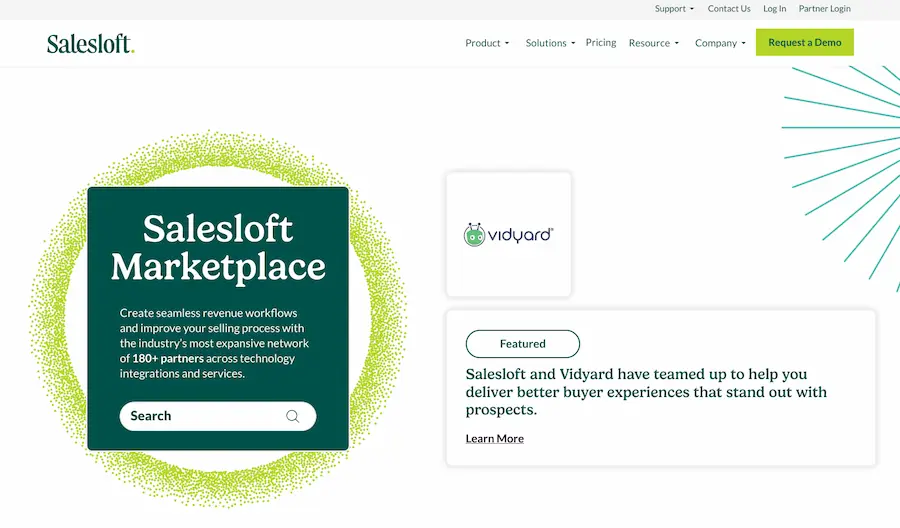
The data is clear: apps and integrations drive business value. Research in Partner Fleet’s guide shows that companies with 5+ active integrations pay a premium for the same core product - 20% more, in fact. Users of those integrations churn 58% less often, too. A great marketplace can unlock huge revenue by helping their target audience achieve their goals faster with the right apps and integrations.
But a great marketplace is so much more than a list of apps and integrations. Building a successful marketplace requires a thoughtful approach, and involves many stakeholders - internal and external.
Key components of marketplace development
Partner Fleet’s guide outlines a variety of essential features every marketplace needs. Iterating on these, and implementing advanced features over time, is critical to choosing the right tech stack - and setting your app store up for long term success.
Here's a few common themes from the guide, and from my experience.
Homepage
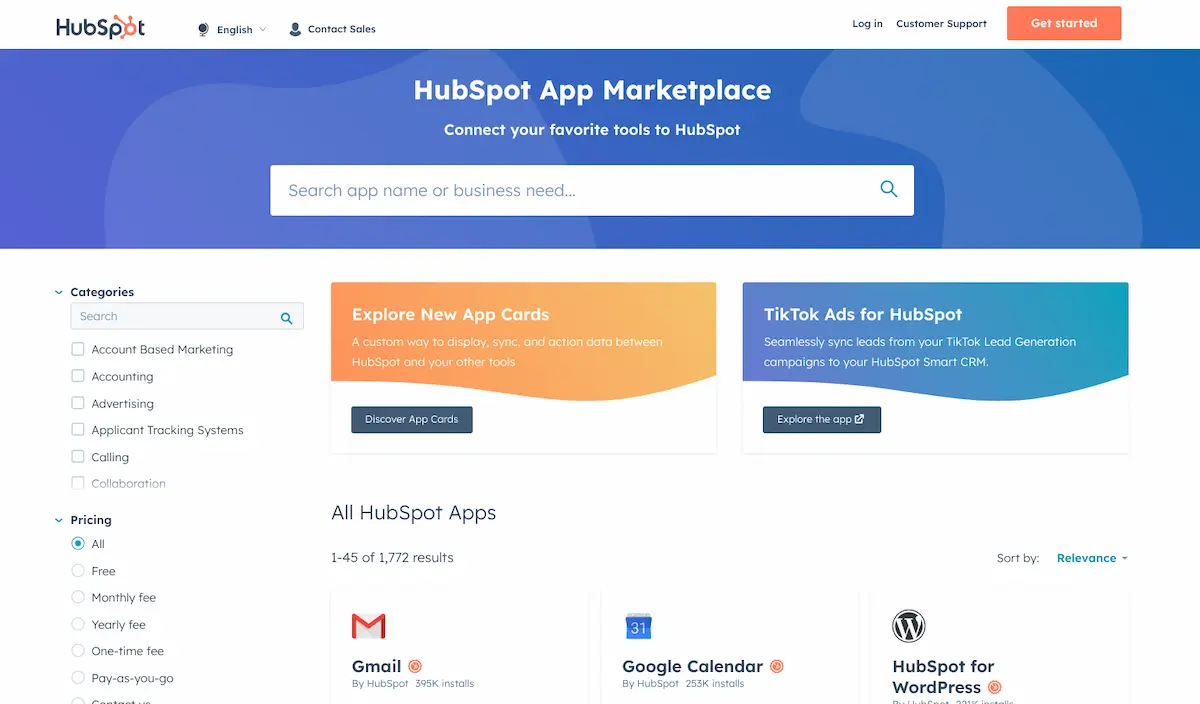
Your marketplace homepage should be more than a static app catalog - it’s a discovery and adoption engine for your ecosystem. Every marketplace is a "source of truth" for the ecosystem it aggregates, so even basic features like a search engine will help customers and prospects navigate the ecosystem faster. Don't forget - your own go-to-market teams will use your marketplace just as much as your customers do. Marketplaces are fantastic sales enablement resources.
Listing pages
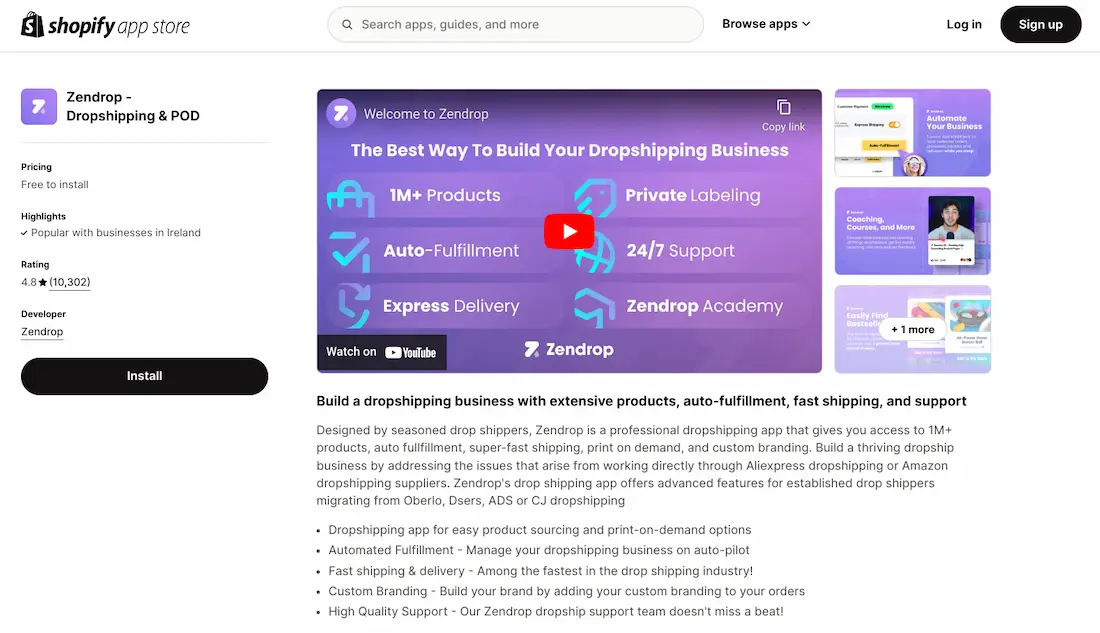
The best marketplaces include listing pages that clearly communicate the value of each marketplace app and prompt users to install it, try it, or buy it. Advanced features of a mature marketplace platform include capabilities to gather user feedback (like ratings and reviews). Most marketplaces get this "wrong" in some way - they often lack consistent structure, full in-depth information, or a mix of both.
Partner portal
In the early days of Intercom and HubSpot's app partner programs, listing submissions and updates were a very manual process. At HubSpot, for example, the first version of our "marketplace" relied on partners filling out HubSpot forms, and our team manually updating each change inside HubSpot CMS. This doesn't scale well. Eventually we built a self-serve home for developers and partners to manage their presence and glean insights.
Operations and admin tools
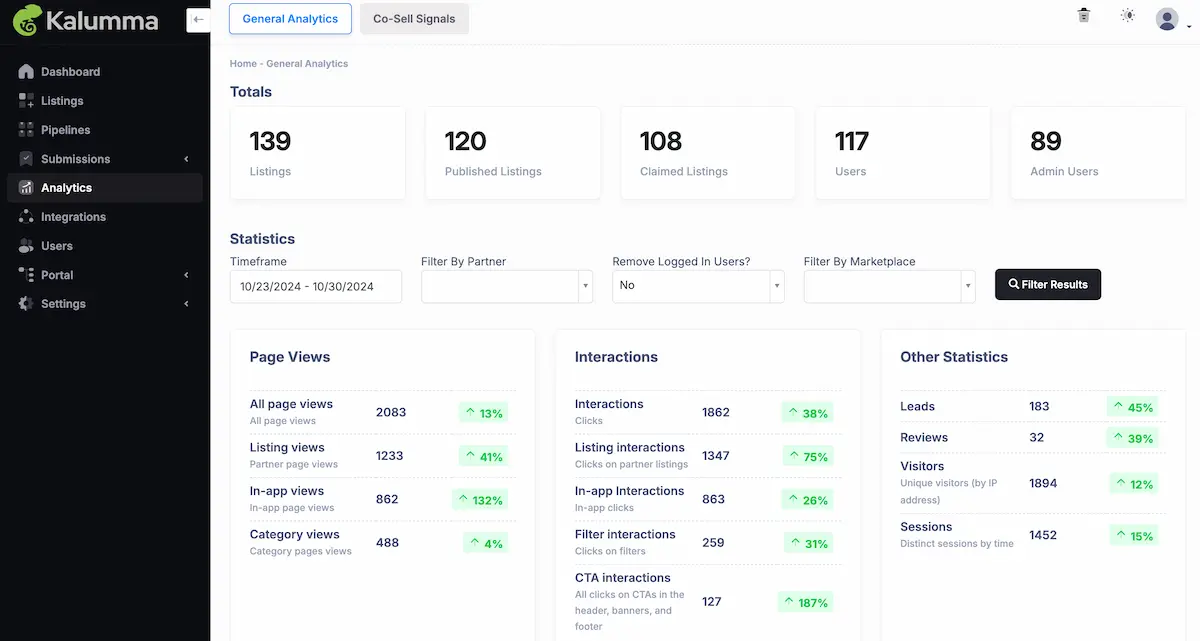
With a growing number of partners submitting a product or service listing for review, and submitting updates and certification applications, inventory management becomes a top priority for program management teams. Online marketplaces demand tools to help program teams manage each marketplace application, and quickly respond to content or policy issues.
Configurability
A strong, foundational, marketplace platform should scale as your ecosystem scales. In the early days of building a marketplace, only the essential features are required. But, as you gather feedback from customers and partners, the right tech stack will help you quickly add features like a secure payment system for payment processing and user account management to curate a personalized shopping experience for every customer.
Should you build or buy?
One of the biggest decisions to make when building a marketplace is whether or not to "build" one at all. Pioneers like Salesforce built their AppExchange from scratch, but most scaling SaaS businesses today can tap into a growing number of marketplace platform solutions that eliminate "work-work" from the process of launching a marketplace.
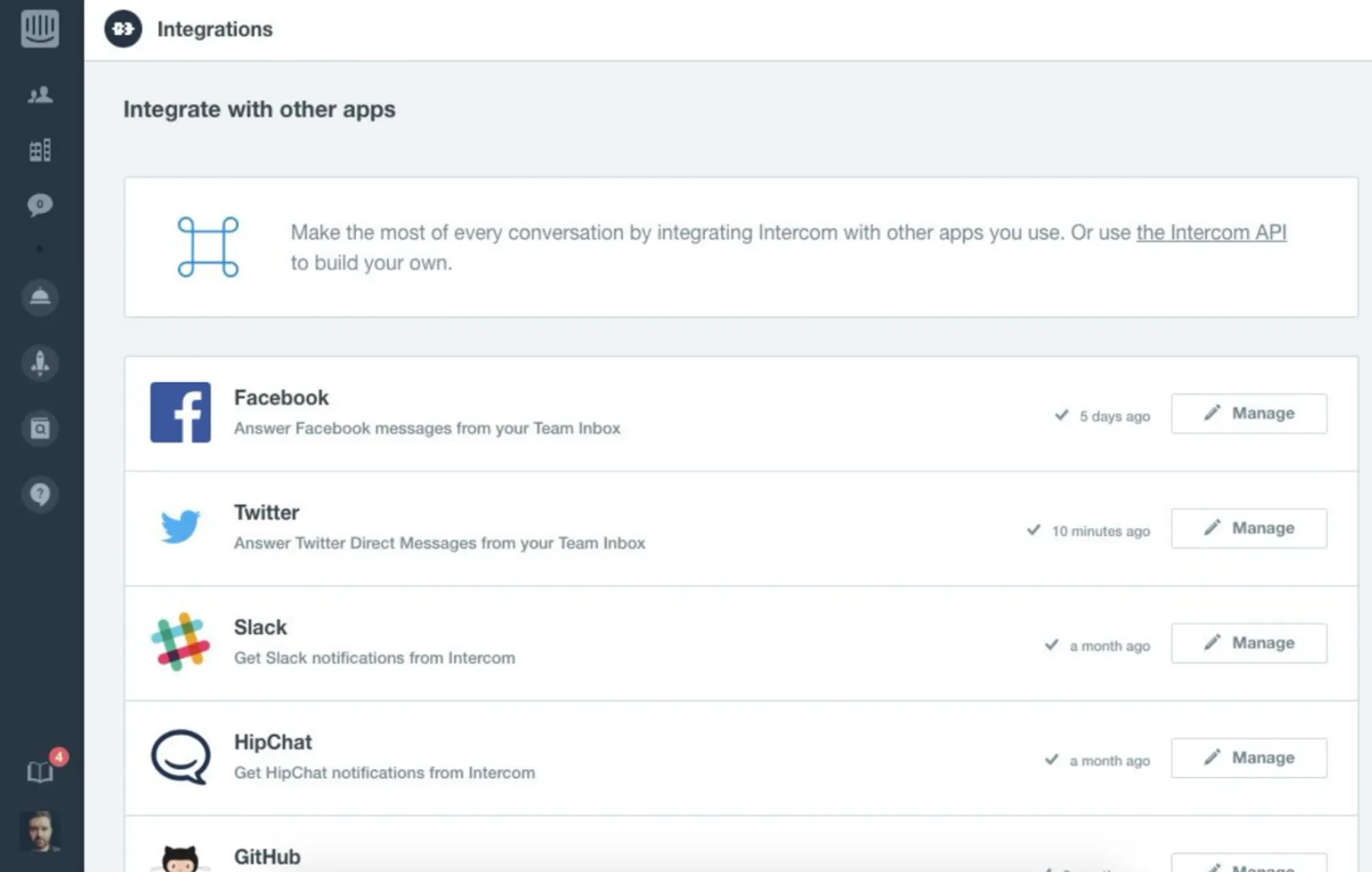
When my team at Intercom built the first version of the Intercom App Store, back in 2016, "buy" options were few and far between. "Build" was our only option. But building even basic features required time and input from our amazing development team, and it took many months to create a marketplace - a basic version of one, at that.
While no-code app builders and generic content management systems are easy to set up, they sacrifice customization and scalability. Building your own marketplace solves this customizability challenge, to offer customers a better, more marketplace-like experience, but hiring an in-house development team and defining a clear, long standing development process demands a company-wide product commitment. There are many cost implications, from start to "finish."
Development resources
The marketplace app MVP (Minimum Viable Product) approach is a cost-effective way to validate the marketplace concept, by launching a stripped down marketplace with only the most essential features and functionality. This can easily be outsourced, if required. But - even if you outsource a custom build - long term management of your own "marketplace stack" will require a significant investment.
Maintenance
Online marketplaces are living, breathing, things. They're usually built and hosted on infrastructure (like AWS) that evolves over time. They often rely on custom app development to integrate the marketplace with other systems in the mix - like CRMs and marketing automation tools. API changes happen all the time. This, inevitably, leads to ongoing maintenance costs, which can be a tough trade-off to manage, especially for early stage startups.
New features
"Done is better than perfect" and "shipping is only the beginning" are two mantras I learned working at Facebook and Intercom. The real message from them? No matter how much you build, or how long it takes to build a product, customers will always demand new features to improve their experience. This never ends - just recently HubSpot added translation features for partners to the 5 year old HubSpot App Marketplace. There is no "one and done" approach to building a successful marketplace.
Market research and planning
Thorough market research is critical to building a successful marketplace. This involves identifying the specific pain points and challenges your users face, and building a marketplace that speaks directly to them.
At Intercom, our customer research led us to understand two main reasons customers use marketplaces. First, to quickly understand whether or not the platform they're about to commit to "plays well" with the products they already use. Second, to understand if they can "future proof" the decision they're about to make, and grow into the platform over time - using apps and integrations available through the marketplace.
Before you even think about build or buy, or start any marketplace development, start by conducting market research. Ask yourself - and your customers - questions like:
- What problem does your marketplace solve? For customers, and for partners?
- Who is your target audience, and what do they care about?
- What are their behaviors and preferences? Do they already use other marketplaces?
- What do we need to build for them now? And what might they need in the future?
- Will our marketplace mostly contain "integrations" between products, or mostly custom apps?
- How many marketplace app developers do we have today? How many might we have in 3-5 years?
Answering these questions will help you build a marketplace that resonates with your target audience and meets their needs - now, and in the future.
Create a marketplace
After working through market research and planning, you'll need to think through the features for your marketplace app MVP (minimum viable product). This basic version of your marketplace should only include the key features needed to solve core problems for your target audience. This will allow you to create a marketplace quickly and collect feedback to feed into your development process.
Launch features
You started by conducting market research and identifying the core problems your marketplace is trying to solve. Next you'll need to, prioritize features by what’s absolutely needed to solve those problems. Think about what features are table stakes to deliver value to your users, and what features - like inventory management - can be added later. This will save you development time and money.
Selecting a tech stack
The technology choices you make are key to building a successful marketplace. Your choice of tech stack - from programming languages to choice of cloud provider - will impact scalability, security, development costs and performance. You'll need to think through the entire development cycle - from launch, to your first 100 listings, to future needs like payment processing and buyers user registration.
Weighing the costs
With your research done, key features mapped out, and the roadmap to a successful marketplace relatively clear, you'll now need to weigh the trade-offs and costs of each option. Maybe a simple "marketplace website" - powered by a CMS - is all you need at this early stage. Or maybe you've decided to create a marketplace that will scale and meet the needs of your target audience over time.
Depending on the capabilities of your development team (if you have one) and programming languages they're used to building with, you might start to decide your internal teams should be focused on creating unique value for your product and company - not reinventing the wheel.
This is increasingly the stage where a "buy" decision starts to make sense. In-house app development teams are usually already stretched thin, and already rely on a variety of stacks like React and Node.js, and Kotlin or cross-platform frameworks like React Native and Flutter to build native mobile apps for iOS and Android. Do you really need to add to this by building a new "product" to manage and scale?
What to do next
Whether you're at an early stage and have a marketplace idea you're thinking of pursuing, or you have a scaling number of apps and integrations you're need to aggregate in one place, in service of a better customer experience, it’s never too early to start planning.
Partner Fleet's guide is super comprehensive, covering common key features and tech stack choices, advanced features your marketplace will likely need, and a decision framework to help you understand whether a marketplace website is more appropriate, or whether you're better off to create a marketplace (or, co-create one with Partner Fleet).
If you're eager to learn more, download Partner Fleet’s full guide, which is totally free.





